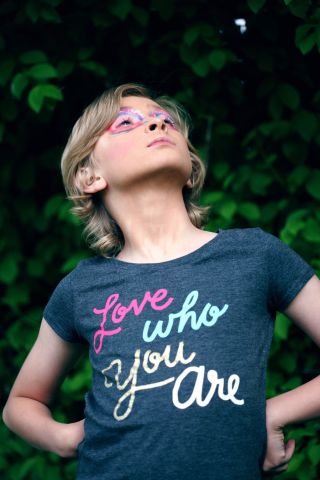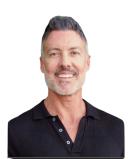Relationships
Self-Love as a Therapeutic Intervention
The most valuable tool we can teach a young person is to love themselves.
Posted January 18, 2023 Reviewed by Ekua Hagan
Key points
- Religious trauma continues to negatively affect LGBTQ+ people and their family members.
- Most LGBTQ+ youth have no models for what it’s like to grow up with an inner sense of self-acceptance for who they are.
- Self-love is a not only a therapeutic intervention; it’s a healing modality for future generations.

After I came out to my mom, she took a deep breath, paused, and said, “You know what my religion says. I can hate the sin, but love the sinner.” I grew up in a religious household, and so as a child, I was familiar with heaven, hell, and what it meant “to be a sinner.” I also knew that I was gay from a very young age, so hiding my identity became my biggest priority growing up.
Keeping my sexuality hidden was the number-one most important thing I could do to prevent anyone from finding out and risk going to hell.
Unfortunately, my story isn’t very different from that of a lot of gay men I work with who have a religious background. Despite my and my family’s continued progress, homophobia can sometimes still rear its ugly head. Just this week, my mom told me that one of her closest friends, a friend with whom she’s had for nearly 40 years and in fact, is like an aunt to me and someone that I’ve loved—who I still love—said that God is punishing my mom for having a gay son.
My mom has experienced health challenges for most of her life and last year, she had to undergo her 15th surgery. Her friend said her “health problems” were because she hasn’t “condemned my homosexual lifestyle.” Not only that, but my stepdad, my mom’s husband, has a lesbian daughter and so, “God is really mad.”
As my mom recounted to me what her friend said, she started to cry. She said she was so hurt and angry with her friend. She also told me that after she begins feeling better, she’d like to start a support group for religious families with LGBTQ+ children in my hometown. She said, “I want to help more families of faith who are suffering from anti-LGBTQ theology.” Then I started to cry and told her that where there’s been rupture, there’s an opportunity for repair. And it’s in the repair that there’s even greater healing and potential for love.
I think that sometimes, when we hear stories like these, we think they’re from the far-off distant past. Unfortunately, religious trauma continues to negatively affect LGBTQ+ people and their family members every day. Not only that, but there are parents who devoutly believe in a God who will punish them for accepting their LGBTQ+ children.
Just this week, three colleagues shared with me instances of homophobia that they’ve witnessed in the workplace. All three people work with youth. One, who works with youth in recovery, said that a lead therapist asked if he could help one of the male youths “speak more manly.” Another, who works at a Catholic grade school, told me that the principal at their school often expresses his discontent at youth who come out as LGBTQ+. He thinks that youth today are “getting brainwashed to become LGBT.”
And earlier this week, a colleague, who is Clinical Director at a therapeutic boarding school, called me to tell me about recent homophobic bullying that they’d like to address. She asked if I could speak at one of their upcoming staff meetings to share my coming out story and talk about anti-LGBTQ bullying.
Whether or not we grew up with religion, our lives have been influenced by religious beliefs. The United States was founded on Puritan values that still course through the veins of many today. Part of unlearning a thought system based on fear is by reexamining our beliefs, especially as they pertain to outdated and misinterpreted religious concepts that create harm in the lives of LGBTQ+ youth, or any human being.
In an article by Fran Grace and Diane Eller-Boyko called, "Longing for the Feminine: Reflections on Love, Sexual Orientation, Individuation, and the Soul," Eller-Boyko (2017) says, “Without models that affirm one’s self-image and love potential, there is pathology. The pathology I had to heal from was homophobia, not homosexuality."
Someone else I know told me about a recent conversation they overheard where a father said that if his son were to come out as gay, he would “smack the sh*t out of him" because being gay wouldn't be tolerated in his house. Hearing that hurt my heart. It also made me realize that although I can’t change anyone’s beliefs, I can share my experience, strength, and hope to help shift limited generational ideology and challenge systemic cultural and religious homophobia.
The personal stories that I’ve shared here represent examples of the daily microaggressions LGBTQ+ people face. And as painful as they are for me to hear, or to even write about, the stronger I become in my resolve to support others who have experienced, or who are currently experiencing, religious trauma and the effects of toxic shame.
Specifically for gay men, because I’m a gay man who specializes in working with gay men, it’s important to shine a light on the trauma and toxic shame that is often internalized. While the LGBTQ+ community has made tremendous progress, there’s still deeper healing work for us to do around the effects of external homophobia unconsciously seared into our psyches. Most young gay men, even when they have affirming parents, aren’t modeled what it’s like to grow up with an inner sense of self-acceptance for who they are as an LGBTQ+ person.
In an article about gay men and an epidemic of loneliness, the author writes, “I went to West Hollywood because I thought that’s where my people were. But it was really horrifying. It’s made by gay adults, and it’s not welcoming for gay kids. You go from your mom’s house to a gay club where a lot of people are on drugs and it’s like, this is my community? It’s like the f--king jungle” (Hobbes, 2017).
I once heard that when we heal, we heal seven generations before us and seven generations back. Whether or not that’s true, the healing work we do in our individual lives makes a difference in more ways than we can ever know. It’s through our personal transformation that we collectively heal.
The most valuable tool we can teach a young person is to love themselves. Some of the most painful experiences in my life came as a result of low self-esteem and a lack of self-worth. The biggest gift I ever gave myself was to begin consciously loving myself—from the inside out.
A client I once worked with asked, “How do we love ourselves?” I told him, “It begins with letting go of who we think we should be and embracing who we are.” When I was his age, I had never heard the concept of self-love. But just like physical exercise, unless we actively do the work, we won’t see the results. By consciously committing to loving ourselves, we begin the first step to healing our lives, thereby healing future generations.
References
Capuzzi, D., & Stauffer, M. D. (2016). Counseling and Psychotherapy: Theories and Interventions (6th Edition) (6th ed.). Amer Counseling Assn.
Eller-Boyko, D., & Grace, F. (2017). Longing for the Feminine: Reflections on Love, Sexual Orientation, Individuation, and the Soul. Psychological Perspectives, 60(3), 289–316. https://doi.org/10.1080/00332925.2017.1350800
Hobbes, M. (2017, March 1). The Epidemic of Gay Loneliness. The Huffington Post. https://highline.huffingtonpost.com/articles/en/gay-loneliness/
Shapiro, D. N., Rios, D., & Stewart, A. J. (2010). Conceptualizing lesbian sexual identity development: Narrative accounts of socializing structures and individual decisions and actions. Feminism & Psychology, 20(4), 491–510. https://doi.org/10.1177/0959353509358441




